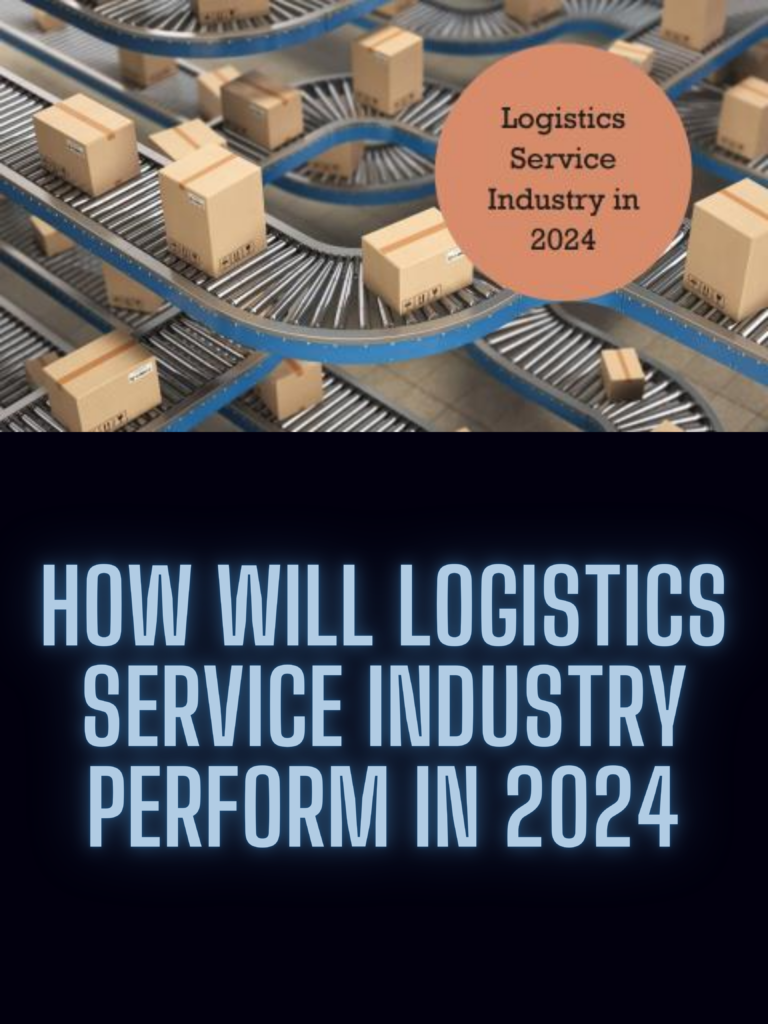Introduction: Industry Dynamics
The logistics service industry, an indispensable component of the global economy, has witnessed significant transformations over the years. As we approach 2024, the industry braces for further evolution, driven by a combination of factors. This article will delve into the anticipated trends How will Logistics Service Industry Perform in 2024

Technological Leap and Sustainability in Focus-Logistics Service Industry
- Technological Advancements and Industry Adaptation
- Digitalization Propels Shipping into the Future-Logistics Service Industry
- Economic Headwinds and Capacity Challenges-Logistics Service Industry
- Pillars of Transformation: Key Trends in 2024-Logistics Service Industry
- Sustainability: Embracing Environmental Consciousness
- Globalization: Expanding Horizons
- Automation: Enhancing Efficiency and Reducing Costs
- Real-time Data: Informed Decision-Making-Logistics Service Industry
- Supply Chain Transparency: A Commitment to Openness
- Agility: Swift Adaptation to Market Dynamics-Logistics Service Industry
- E-commerce Surge: Shaping Logistics Services
- Collaboration: Strengthening Industry Ties for Efficiency
- Impact on Indian Logistics: Adapting to the New Normal-Logistics Service Industry
- Analyzing the Indian Logistics Landscape-Logistics Service Industry
- Disclaimer
Technological Advancements and Industry Adaptation
In 2024, logistics companies are projected to harness the tide of technological advancement, process automation, and heightened environmental sustainability. A comprehensive report underscores key factors including supply chain agility, global labor shortages, automation, real-time data, and enhanced supply chain transparency. Adapting to these trends is imperative for sustaining competitiveness in the dynamic market.
Digitalization Propels Shipping into the Future–Logistics Service Industry
Another insightful report suggests that digitalization will be a reality for many shippers in 2024. The aftermath of the Covid-19 pandemic and the surge in remote work have accelerated the digital transformation of the shipping and logistics industry. Major players like Maersk, MSC, Hapag-Lloyd, and boutique shipping firms have swiftly digitized operations. The integration of artificial intelligence (AI) and blockchain technology poised to further revolutionize shipping. And enhancing real-time shipment tracking and supply chain visibility. A notable stride in this digital shift is the advent of paperless shipping. And exemplified by freight forwarders like MTS Logistics achieving 100% paperless operations by 2023. The industry at large is embracing digital platforms, marking a pivotal shift in shipping practices.
Economic Headwinds and Capacity Challenges-Logistics Service Industry
Record-Breaking Capacity Amid Economic Uncertainties
Despite hopes for economic stabilization post-Covid, the logistics service industry expected to face economic headwinds in 2024. Notably, UPS Supply Chain Solutions predicts 2024 to be a record-breaking year, with an estimated 3 million TEUs of new capacity flooding the market. This surge, coupled with low demand, raises concerns about an impending overcapacity challenge. The Drewry Supply/Demand Index forecast for 2024 is at 74.3, marking the lowest score ever reported.

Adaptability: A Crucial Response to Challenges
In conclusion, the logistics service industry anticipates significant changes in 2024. To thrive in this dynamic landscape, the industry must adeptly respond to technological shifts, embrace digitalization. And demonstrate agility in navigating economic headwinds and potential overcapacity scenarios.
Pillars of Transformation: Key Trends in 2024-Logistics Service Industry
Sustainability: Embracing Environmental Consciousness
In 2024, the logistics service industry poises to adopt a more environmentally conscious stance. Companies will compel to adopt sustainable practices, including the reduction of carbon emissions, the utilization of renewable energy sources, and the minimization of waste.
Globalization: Expanding Horizons
The industry expected to continue its global expansion in 2024, necessitating adaptation to the evolving global landscape and the escalating demand for cross-border logistics services.
Automation: Enhancing Efficiency and Reducing Costs
Automation is projected to play a pivotal role in 2024, with technologies such as drones, autonomous vehicles, and robotics enhancing efficiency and cutting costs within the logistics service industry.
Real-time Data: Informed Decision-Making–Logistics Service Industry
The reliance on real-time data is anticipated to intensify in 2024, empowering companies to make better decisions and enhance overall supply chain visibility.
Supply Chain Transparency: A Commitment to Openness
Enhanced transparency in the supply chain expected in 2024, with companies obligated to provide more detailed information about their supply chains to customers and stakeholders.
Agility: Swift Adaptation to Market Dynamics-Logistics Service Industry
Industry players are expected to become more agile in 2024, enabling quick adaptation to changing market conditions and evolving customer demands.
E-commerce Surge: Shaping Logistics Services
The logistics service industry poises for a surge in e-commerce in 2024. The Covid-19 pandemic’s acceleration of online shopping trends necessitates adaptation to provide efficient and reliable e-commerce logistics services.
Collaboration: Strengthening Industry Ties for Efficiency
Collaboration sets to play a significant role in 2024, requiring companies to engage in collaborative efforts with each other and various stakeholders to enhance supply chain efficiency and reduce costs.
Impact on Indian Logistics: Adapting to the New Normal-Logistics Service Industry
E-commerce Boost and Efficient Cargo Handling
The proliferation of e-commerce platforms in India and internationally has substantially contributed to the revenues of the logistics sector. The industry’s adept handling of cargo has empowered Indian exporters, allowing them to gain a competitive edge in global markets.
Logistics Automation Awareness and Market Growth
Growing awareness of the benefits of logistics automation, including cost reduction, time efficiency, and error prevention, is driving market growth in India. Companies are proactively investing in employee training to enhance overall productivity and align with the demands of an evolving industry.
Analyzing the Indian Logistics Landscape-Logistics Service Industry
Transportation Type Segmentation and Cost Analysis–Logistics Service Industry
The market, segmented based on transportation types—roadways, waterways, railways, and airways—provides valuable insights into the diverse facets of the Indian logistics service industry. An analysis of India’s logistic costs and performance indicators reveals a positive trend, with reduced costs contributing to economic growth.
Airways Logistics Service: A Marginal Upsurge
The airways logistics service segment expected to witness a marginal increase in 2023, fueled by the escalating e-commerce demand from tier II and III cities and the trend of one-day delivery. However, challenges such as complicated cargo clearance procedures, infrastructure blockages, and congestion at cargo terminals may impede the overall growth of this segment.
Market Driver: E-commerce Fuels Logistics Demand
The rise of e-commerce in India has significantly boosted supply and logistics businesses employing data science for shipment tracking. The surge in online shopping, driven by the demand for quick delivery, has prompted e-commerce firms to expedite customer reach. Wholesalers and offline retailers are investing in logistics, and express delivery services from e-commerce providers are fueling demand for Third-Party Logistics (3PL), benefiting the overall logistics market.
Third-Party Logistics (3PL) Market: Competitive Dynamics
The Indian market for Third-Party Logistics (3PL) characterized by high fragmentation and an intensely competitive environment. The comparatively high cost of logistics in India, compared to other countries, drives the demand for 3PL and 4PL service providers, shaping the competitive landscape.
Key Market Trends: Sustainability Takes Center Stage
A growing trend gaining popularity in India is the emphasis on sustainability in warehousing practices. Market players are actively reducing their carbon footprint by incorporating green energy practices like solar panels or LED lights, introducing electric vehicles (EVs) for transportation, and utilizing recyclable packing materials such as cardboard instead of plastic packaging.
In summary, the logistics service industry in India is poised for substantial growth and transformation. The synergy between e-commerce, logistics automation, and sustainability initiatives reflects the industry’s adaptability and responsiveness to evolving market dynamics. As India continues to play a significant role in global trade, the logistics sector’s ability to innovate and embrace change will be instrumental in sustaining its upward trajectory.
Disclaimer
This article has been created on the basis of internal data, information available publicly, and other reliable sources to be believed. The article may also include information which are the personal views/opinions of the authors. The information included in this article is for general, educational, and awareness purposes only and is not a full disclosure of every material fact.
All the information on this website i.e. World Virtual CFO – is published in good faith and for general information purposes only. World Virtual CFO does not make any warranties about the completeness, reliability, and accuracy of this information. These are my views for only information purposes. Any action you take upon the information you find on this website (World Virtual CFO), is strictly at your own risk. World Virtual CFO will not be liable for any losses and/or damages in connection with using our website. For details please refer to our disclaimer page.
Dr. Dinesh Sharma is an award-winning CFO and AI strategist with over two decades of experience in financial leadership, digital transformation, and business optimization. As the founder of multiple niche platforms—including WorldVirtualCFO.com—he empowers professionals and organizations with strategic insights, system structuring, and innovative tools for sustainable growth. His blogs and e-books blend precision with vision, making complex financial and technological concepts accessible and actionable.
1 thought on “How will Logistics Service Industry Perform in 2024 Know now”